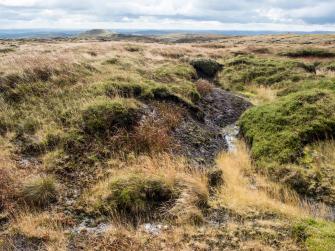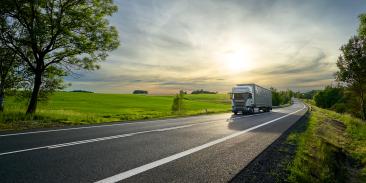Carbon savior or carbon bomb? The complicated story of Earth's peat bogs
Pound-for-pound, peat is the toughest climate change fighter on Earth. Peatlands, which make up only about 3% of the planet’s land surface, hold as much as 30% of all carbon locked in the soil – twice as much as the world’s forests.
Unfortunately, these wondrous, boggy wetlands are vulnerable to both climate change and human development.

“We can’t count on all of these areas remaining carbon sinks forever,” said Doria Gordon, lead senior scientist for the Environmental Defense Fund. “We need more research to understand where they will serve that function as our climate changes. And above all, we need to protect the existing peatlands with saturated soils in regions that are likely to remain wet and cool, because those are the ones most likely to persist as sinks.”
In terms of quantity and quality, peatlands are unevenly distributed around the globe. Approximately 20% of peatland carbon storage is in the tropics, but the vast majority of peatlands exist at higher latitudes (in boreal zones below permafrost areas), where they are more vulnerable to warming temperatures, permafrost thaw and wildfires.
“Drying and heating are not good for peatlands,” Gordon said. “There’s a lot of projections that before the end of the century global peatlands are going to become sources of greenhouse gasses instead of sinks because of continued drainage and increased fire and microbial decomposition rates.”
Studies estimate that about 15% of peatlands have already been drained for human development over the centuries, resulting in major greenhouse gas emissions. Research also shows that restoring peatlands would prevent annual emissions of nearly 400 million tons of carbon dioxide equivalents (combining both CO2 and methane) being released into the atmosphere, more than the annual emissions from 84 million passenger vehicles.
Beyond their ability to absorb carbon, peatlands are also crucial sanctuaries of biodiversity, as well as freshwater filters. But these fragile ecosystems can easily be degraded, drained or irreversibly damaged. If enough of this happens, the result could be what researchers call a “carbon bomb” – a situation in which peatlands become massive greenhouse gas emitters.
While efforts are now underway to restore some damaged peatlands, it’s unclear how well they will succeed.
“We don’t know whether restoration is actually going to be a viable long-term way to increase carbon storage,” Gordon said. “It really depends on whether we can get the hydrology back. Unless we can re-saturate the soils, those peatlands will continue to dry out and be sources of CO2 and methane emissions.”
That uncertainty makes the protection of healthy peatlands (and locating them around the world) critical. “Our best bet right now is protection of existing, non-drained peatlands, in areas not projected to become susceptible to a much greater risk of fire,” Gordon said.
At least two countries today include peatland restoration in their pledges, submitted at last year’s COP26 United Nations climate summit, to cut greenhouse gas emissions.
Britain has committed more than $1 billion by 2025 for peatland restoration, woodland creation and the management of habitats. The goal is to restore close to 700,000 acres by 2050, while phasing out the commercial sale of peat for use in gardens and elsewhere. And Scotland, where more than 20% of landmass is peat bog, has promised to restore 618,000 acres by 2030.
In the U.S., a large peatland restoration project is underway within the Pocosin Lakes National Wildlife Refuge, on the coastal plain of North Carolina. After a massive wildfire in 2008, which burned for months and destroyed 40,000 acres in the area, a restoration effort was begun, which now covers more than 43,000 acres.
Many of the world’s peatlands have stood their swampy ground since the end of the last Ice Age, almost 12,000 years ago. But the climate clock is ticking. The survival of these uniquely valuable ecosystems depends on how quickly researchers can identify where they are most likely to persist as the climate changes, and how quickly the world acts on that knowledge.










